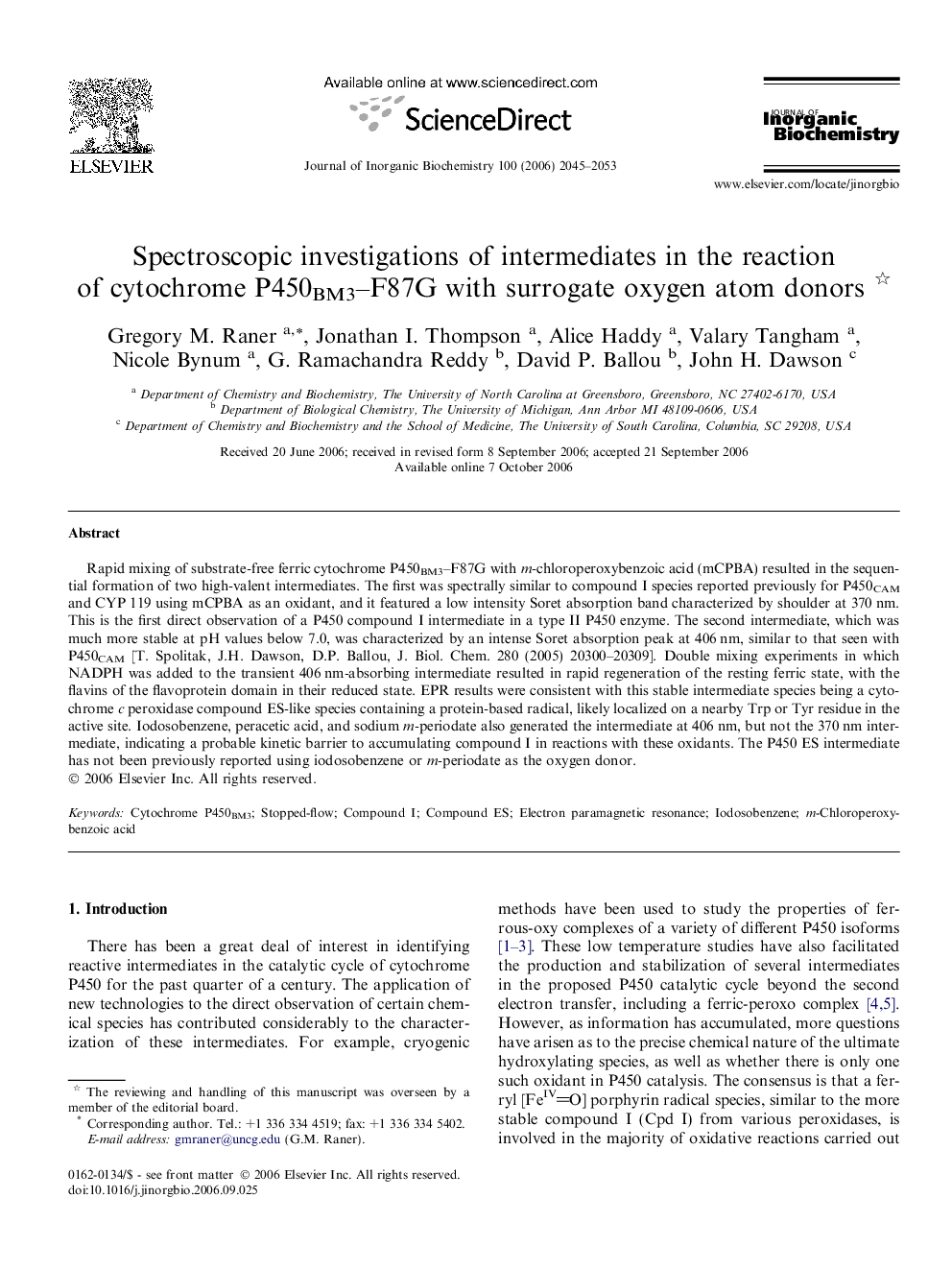| Article ID | Journal | Published Year | Pages | File Type |
|---|---|---|---|---|
| 1318167 | Journal of Inorganic Biochemistry | 2006 | 9 Pages |
Rapid mixing of substrate-free ferric cytochrome P450BM3–F87G with m-chloroperoxybenzoic acid (mCPBA) resulted in the sequential formation of two high-valent intermediates. The first was spectrally similar to compound I species reported previously for P450CAM and CYP 119 using mCPBA as an oxidant, and it featured a low intensity Soret absorption band characterized by shoulder at 370 nm. This is the first direct observation of a P450 compound I intermediate in a type II P450 enzyme. The second intermediate, which was much more stable at pH values below 7.0, was characterized by an intense Soret absorption peak at 406 nm, similar to that seen with P450CAM [T. Spolitak, J.H. Dawson, D.P. Ballou, J. Biol. Chem. 280 (2005) 20300–20309]. Double mixing experiments in which NADPH was added to the transient 406 nm-absorbing intermediate resulted in rapid regeneration of the resting ferric state, with the flavins of the flavoprotein domain in their reduced state. EPR results were consistent with this stable intermediate species being a cytochrome c peroxidase compound ES-like species containing a protein-based radical, likely localized on a nearby Trp or Tyr residue in the active site. Iodosobenzene, peracetic acid, and sodium m-periodate also generated the intermediate at 406 nm, but not the 370 nm intermediate, indicating a probable kinetic barrier to accumulating compound I in reactions with these oxidants. The P450 ES intermediate has not been previously reported using iodosobenzene or m-periodate as the oxygen donor.
